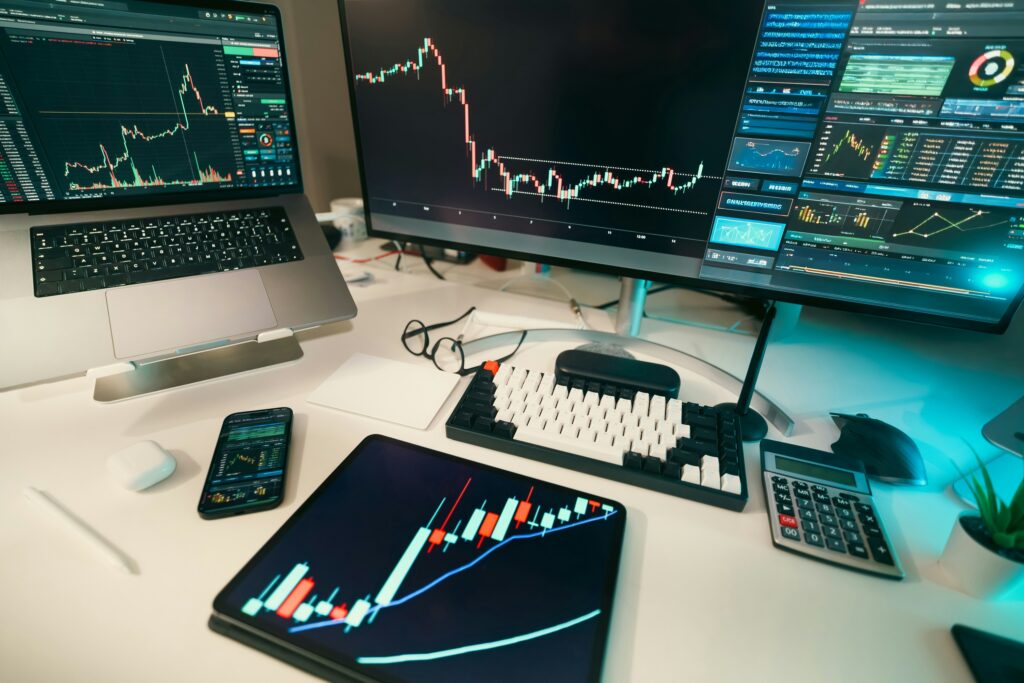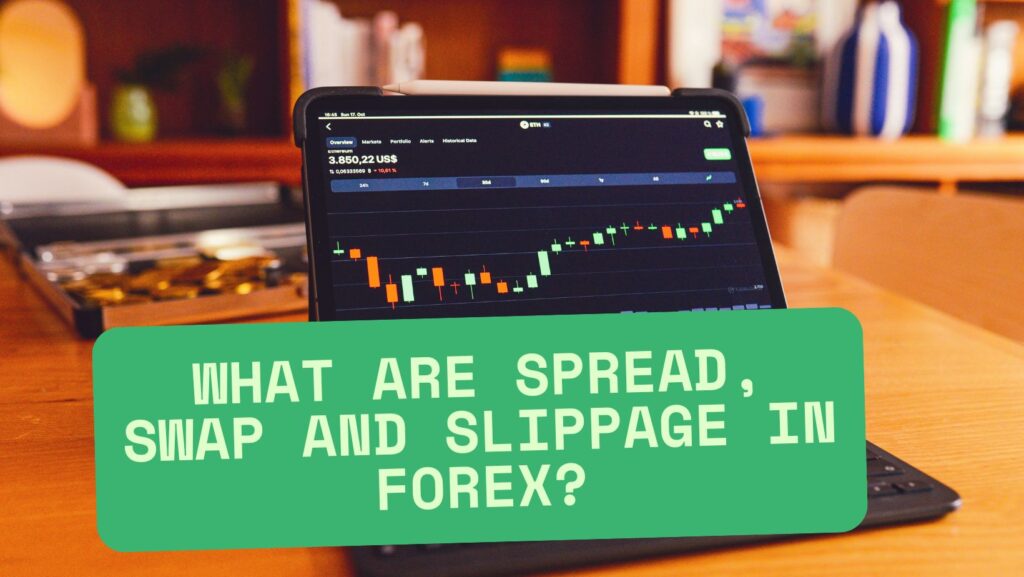If you are thinking of starting Forex trading or are a beginner, you may be confused by terms like “spread”, “swap” and “slippage”. All three of these terms are related to hidden fees and trade execution, which directly affect your profit/loss.
In this blog,
explain step by step:
- What is spread and how is it calculated
- What are spread fees
- What is slippage and how to avoid it
Explanation with real examples

1. What is spread?
Spread is the difference between the bid price and the ask price.
🔍 Bid price
This is the price at which the broker is willing to buy a currency from you.
🔍 Ask price
This is the price at which the broker is willing to sell a currency to you.
Spread = Ask Price – Bid Price
🧮 Example:
If EUR/USD:
Bid Price = 1.1000
Ask Price = 1.1002
Then Spread = 2 pips
This means that when you open a trade, your trade starts with a loss of 2 pips – this is the broker’s commission.
Types of Spreads
1. Fixed Spread
The spread is always the same (for example, 2 pips)
It is fixed, especially in markets with low volatility
Most market maker brokers offer it
2. Floating Spread
Changes depending on market conditions
Can increase volatility
ECN/STP brokers offer it
Key points about spreads Points
| Point | Explanation |
| Currency Pair | Major pairs (EUR/USD, GBP/USD) have low spreads |
| Time of Day | Spreads can increase in volatile markets (news time) |
| Account Type | ECN accounts have low spreads but charge additional commissions |
2. What is a swap?
A swap or rollover fee is an overnight interest that you have to pay or receive to keep your trade open until the next day.
Swap = Interest rate difference between two currencies
Each currency has its own interest rate (depending on the central bank). When you buy one currency and sell another, the difference between the two interest rates is calculated.
✅ Positive swap
You earn interest
❌ Negative swap
You have to pay interest
3. What is slippage?
When your order is not executed at the price you clicked but moves slightly higher or lower due to high volatility or execution delay.
🧮 Example:
You placed a buy order at 1.1000
But the order was executed at 1.1003 → 3 pip slippage
Types of Slippage
✅ Positive Slippage:
Your order was executed at a good price (profit)
❌ Negative Slippage:
Your order was executed at a bad price (loss)
Why does slippage occur?
High volatility (news time)
– Such as non-farm payrolls, Fed rate decisions, etc.
– The price moves so fast that the order is not filled at the right point
Low liquidity
– Where there are few buyers and sellers
Slow internet/execution lag
– Platform response is delayed
How to avoid slippage?
| Tip | Explanation |
| Avoid news | Do not trade during high impact news |
| Choose an ECN broker | Offers fast execution |
| Place limit orders | Increased slippage in market orders. |
Real life scenario summary
| Term | Meaning | Affects What? |
| Spread | Buy-Sell price difference | Trade Entry Cost |
| Swap | Overnight interest fee | Trade holding |
| Slippage | Unexpected execution price | Trade Accuracy |
❓ Frequently asked questions
Question 1. Do all brokers charge the same spread?
Answer: No. Each broker’s spread is different depending on the account type and liquidity providers.
Question 2. Can swaps be avoided?
Answer: Yes, you become an intraday trader or choose a swap-free account.
Question 3. Can slippage be avoided completely?
Answer: Complete control is not possible, but you can minimize it with smart planning.

🧾 Conclusion
Profit/loss in Forex trading does not depend solely on price movement – spreads, swaps, and slippage also play a big role.
Spreads are your entry-level costs
Swaps are your holding costs or rewards
Slippage is your execution surprise
If you plan with these three factors in mind, your trading experience can be more stable and profitable.
So if you liked this blog then follow and share www.growthlikej.com for similar informative knowledge blogs.

